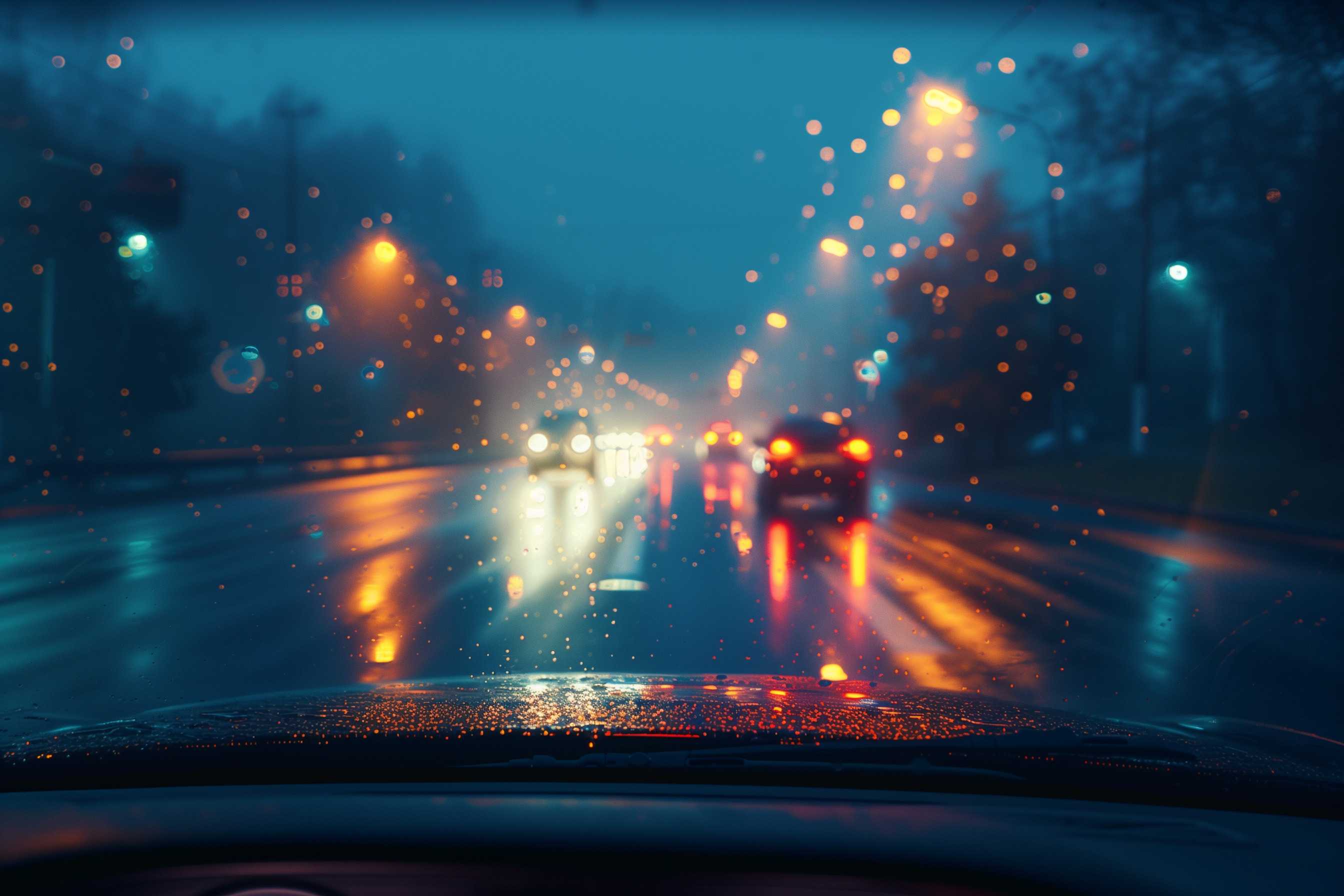Most people hardly even notice the November time change when clocks fall back, and the sun begins to disappear well before dinner. For those suffering from chronic illness, autoimmune conditions, or cancer treatment, however, the change ushers in a lot of struggles that may be quite unexpected, particularly in terms of vision and nighttime driving.
If you've ever had the feeling that suddenly the headlights feel blinding, the road hard to focus on, or your eyes tired a long time before your night even gets going, believe it, you are not imagining it. There is a very real physiological link between chronic illness, seasonal darkness, and visual strain. Knowing this may make all the difference.
Now, we're going to walk through why this happens, and how you might work around it, so that you can stay safe, supported, and prepared.
The Relationship Between Chronic Diseases and the Loss of Vision
In many chronic illnesses and autoimmune diseases, there can be changes within the eyes, everything from very subtle to quite noticeable. This is seldom discussed, but it is fairly common. Signs may appear as:
- Blurred vision
- Photophobia
- Halos or starbursts around headlights
- Dryness and burning of eyes
- Difficulty adjusting between bright and dark environments
- Fatigue that impairs concentration
Conditions that affect the eyes through inflammation, dryness, and involvement of the nerves include lupus, rheumatoid arthritis, Sjögren's syndrome, MOGAD, MS, and thyroid disorders. Cancer treatments and chemotherapy may also cause temporary and sometimes lasting changes in the eyes.
Symptoms are often mild, but chronic inflammation combined with seasonal darkness can be a challenge, especially behind the wheel.
Why It Gets Worse After the Time Change
-
Early darkness strains the eyes.
The eyes are dependent upon natural light to control the focusing, moisture, and sensory input. The earlier it gets dark, the harder and more tiring the work of the eyes. -
Astigmatism becomes more noticeable.
If you have astigmatism, even a very mild one, night driving can exaggerate the:- Glare
- Starbursts
- Difficulty reading road signs
- Difficulty in judging distances
-
Fatigue impairs the vision.
Chronic illnesses sap energy, and by the end of most people's drives home from errands or appointments, the body is often at a stage of "end-of-day depletion" that makes night driving feel overwhelming. -
Drugs can add to dryness and/or blur.
Steroids, antihistamines, antidepressants, biologics, and chemo drugs are commonly associated with:- Dry eye
- Photosensitivity
- Blurred focus
-
The senses overload the brain.
Many chronic illnesses are accompanied by nervous system effects. Headlights, shadows, reflective signs and rapidly changing lighting conditions can be overstimulating; visual contrast is more extreme in fall and winter.
Yes — Eye Exams Matter More with Chronic Illness
Even if your vision seems stable, yearly eye exams are crucial. The majority of ophthalmologists suggest:
- Every 12 months for chronic problems
- Every 6 months if there is active autoimmune eye involvement
Immediately assess for sudden photophobia, eye pain, flashes or loss of vision. Eye inflammation can be silent. Early detection will prevent long-term damage and also optimize your prescription for night driving.
How to Work Around These Nighttime Vision Problems
Fortunately, a number of basic adjustments will make nighttime driving much safer and far less stressful.
-
Keep your prescription for glasses current.
Even minor changes can make a big difference in night clarity. Ask your eye doctor about lenses designed for:- Driving at night
- Anti-glare coatings
- Reduction of halos and starbursts
-
Use artificial tears regularly.
Dry eyes = blurred vision + increased glare. Preservative-free lubricating drops can decrease pre-driving stress. -
Dim your dashboard lights.
Bright interior lights make it difficult for the eyes to adjust to darkness. -
Clean your windshield inside and out.
A small film of dust magnifies glare from headlights and streetlights. -
Put the mirror in "night mode."
Most rearview mirrors have an anti-glare toggle. It instantly reduces the harshness of the headlights from cars behind you. -
Put on all the autumn/winter accessories you have.
Coldness increases dryness and headache. Warming up keeps the nervous system calm.- Soft hoodies blocking cold air drafts
- Cozy sherpa that is warm but offers no sensory irritation
- Comfortable layers for appointments and end-of-day errands
-
Don't drive when your body is in a "flare window."
If symptoms are worse at night, try:- Doing errands early
- Scheduling appointments in daylight - if you can only have an appt after work like 4/5PM, get your yearly exam cycle into the March-October window.
- Reaching out to a loved one for help
-
Rest your eyes before driving.
Closing your eyes for 60 seconds or looking away from screens for 20 minutes can restore focus and reduce strain. -
Never ignore sudden changes in vision.
If lights seem different overnight, or if you develop new floaters, color distortion, or tunnel vision — call your provider immediately.
How These Changes Connect to the Season
Fall and winter bring with them:
- Less daylight
- More driving in darkness
- Colder, drier air
- Increased fatigue
- Earlier flares
- More sensory overwhelm
This combination creates the perfect storm for heightened vision issues in the chronic illness community, but with awareness and preparation, you can stay safe and supported through every part of the season.
Final Thoughts
If driving has suddenly become harder, it’s not in your head, and you’re not alone. The shift into early darkness challenges even healthy eyes, and chronic illness makes those shifts even more intense.
Being aware of what’s going on and making minor adjustments can prevent strain, add clarity, and preserve your long-term vision.
And if at any time you don’t feel safe driving at night, then there’s no shame in stopping and finding rest, or in asking for help — your safety comes first.art
As always, we’re here to support you through every season of your journey, one moment of comfort at a time.



Why the End of Daylight Saving Time Hits Harder with Chronic Illness